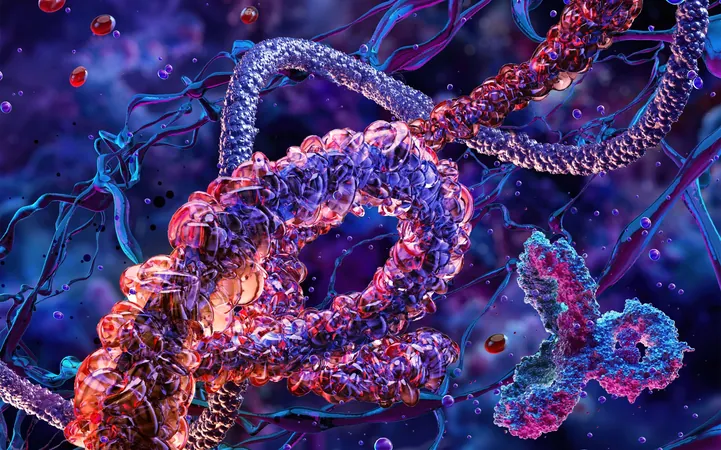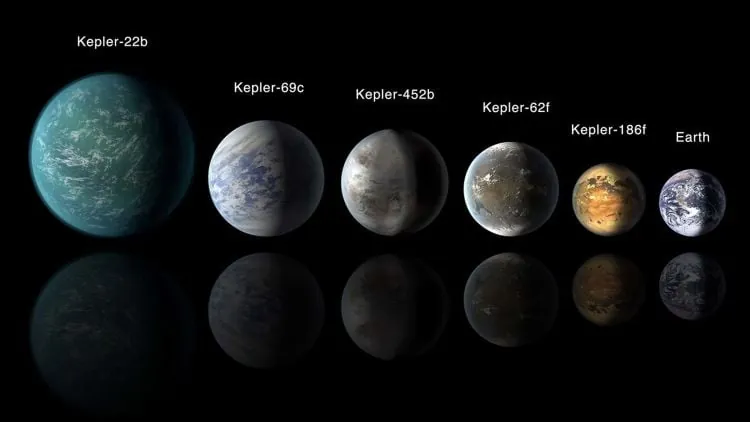
Could Life Thrive Around Dying Stars? An Astronomer's Bold New Theory
2025-08-28
Author: Amelia
The Future of Our Sun and Its Cosmic Legacy
As the Sun approaches its eventual demise, it signals not an end, but a potential new beginning for the solar system. When it exhausts its hydrogen fuel, the Sun will swell into a Red Giant, shedding massive layers and leaving behind a white dwarf—a dense remnant that could alter the fate of nearby celestial bodies.
The Thrill of Discovery: Life Around White Dwarfs
In 2020, a groundbreaking discovery changed the game: the first intact planet was found orbiting a white dwarf. This sparked intrigue within the astronomical community regarding the possibility of life existing in such extreme environments. The key to investigating this lies in analyzing the atmospheres of these distant planets when they transit in front of their faint stellar hosts.
Seeking Signs of Life in Alien Oceans
In June 2025, I proposed a question that has lingered in the minds of researchers: Is it feasible for an ocean, crucial for life as we know it, to exist on a planet orbiting so close to a dead star? The answer could redefine our understanding of habitable zones.
The Abundance of White Dwarfs
White dwarfs, with about half the mass of our Sun packed into an Earth-sized volume, are astoundingly common—an estimated 10 billion wander through our galaxy. With countless more set to form, many of them could potentially host planets that retain the conditions necessary for life.
Defining the Habitable Zone
The habitable zone surrounding a white dwarf is remarkably closer than our own Sun's. Here, liquid water could exist without boiling away or freezing. However, this proximity poses unique challenges.
The Challenge of Tidal Heating
Living near a white dwarf can result in tidal heating, where gravitational forces deform a planet, causing potentially catastrophic heating similar to the volcanic activity observed on Jupiter’s moon Io. This heat can raise surface temperatures to the point where water may boil away, making habitability a test of endurance.
Survive the Red Giant Phase?
For a planet to sustain life, it must survive the intense expansion of its host star during the Red Giant phase. This phase will obliterate inner planets in our solar system. Only those starting far away and migrating inward post-white dwarf formation might have a shot—but the perils of tidal heating could still threaten their watery surfaces.
A Hopeful Future for White Dwarf Planets
Despite the challenges, it's hypothesized that under optimal conditions, planets orbiting white dwarfs could support liquid water and, potentially, life. Scientists are actively searching for these elusive planets, employing advanced telescopes like the James Webb Space Telescope to improve prospects.
The Search for Life Beyond Earth
Although no Earth-like exoplanets have yet been spotted around white dwarfs, the challenges of detection are being confronted head-on. As methods evolve, so too does our understanding of where life might thrive—even after a star has passed its prime.
If we can confirm the existence of habitable planets orbiting white dwarfs, it would revolutionize our perception of life’s possibilities in the universe, showing that life can take root in environments previously thought inhospitable.









 Brasil (PT)
Brasil (PT)
 Canada (EN)
Canada (EN)
 Chile (ES)
Chile (ES)
 Česko (CS)
Česko (CS)
 대한민국 (KO)
대한민국 (KO)
 España (ES)
España (ES)
 France (FR)
France (FR)
 Hong Kong (EN)
Hong Kong (EN)
 Italia (IT)
Italia (IT)
 日本 (JA)
日本 (JA)
 Magyarország (HU)
Magyarország (HU)
 Norge (NO)
Norge (NO)
 Polska (PL)
Polska (PL)
 Schweiz (DE)
Schweiz (DE)
 Singapore (EN)
Singapore (EN)
 Sverige (SV)
Sverige (SV)
 Suomi (FI)
Suomi (FI)
 Türkiye (TR)
Türkiye (TR)
 الإمارات العربية المتحدة (AR)
الإمارات العربية المتحدة (AR)